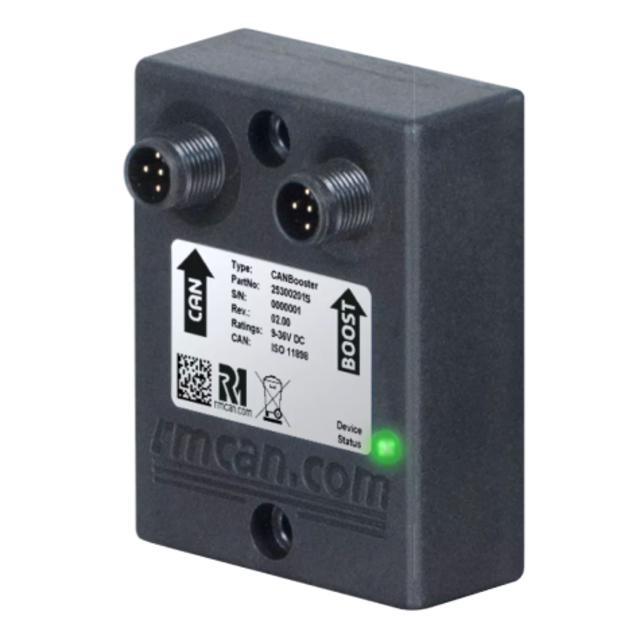
Reliable CAN data transfer, even in difficult operating conditions
- CAN data transfer with higher voltage level
- Protection against overvoltage impulses
- Range of up to 1,000 ft
Poorly conductive contacts are bypassed
Usually, CAN signals are transmitted at a very low voltage level. If poorly conductive contacts need to be bypassed during transmission, however, this voltage level is insufficient to do so. CANboosters are always operated as "bypasses" and facilitate bi-directional data transfer. In the process, CAN messages received by the CAN interface are transferred by a CANbooster – which has a considerably higher voltage level (8V/16V differential) than CAN in accordance with ISO11898-2 – to a second CANbooster. The latter then transmits the data to the CAN bus. Contaminated and so poorly conductive contacts thus present no further hindrance. The cable between the boost interfaces may be up to 300 m long. The high dielectric strength of the CANboosters means that any connected CAN devices, apart from being protected from destruction, are protected against overvoltage.
Reliable data transfer despite difficult conditions
CANboosters have robust, splash-proof plastic housing that allows them to be used even in difficult environmental conditions. Harbor cranes are an ideal area where CANboosters can be applied. Here, sliding contacts are often used to transfer control signals from the cabin to the claw. These sliding contacts are often contaminated or corrode due to unfavorable weather conditions. The CAN and boost-sides on the device are galvanically isolated.
Product Variants
| CANbooster | 5101 |
|---|---|
| CAN (galv. isolated) | 1 |
| Boost Interface | 1 |
Connectivity
| IN | OUT |
|
|
|---|